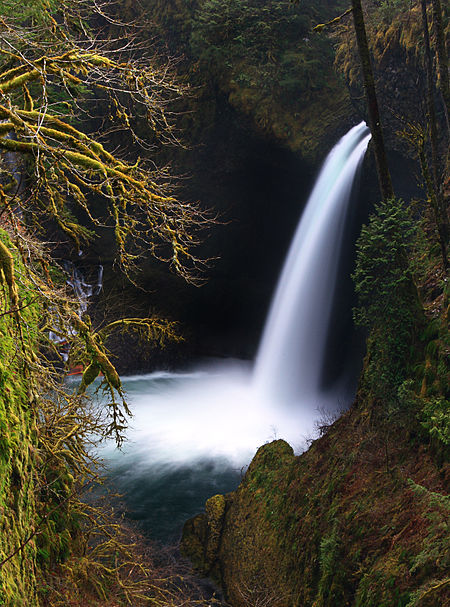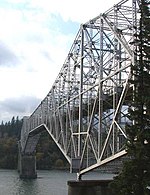Metlako Falls
Mount Hood National ForestPunch bowl waterfallsWaterfalls of Hood River County, OregonWaterfalls of Oregon

Metlako Falls is a waterfall on Eagle Creek in the Columbia River Gorge National Scenic Area in Hood River County, Oregon, United States. It is the furthest downstream of the major waterfalls on Eagle Creek. Like upstream Punch Bowl Falls, Metlako is also in the form of a punchbowl. The falls is 31 meters (101 ft) tall, though people have measured it anywhere from 30 to 46 m (100 to 150 ft) tall. It is the upstream limit for salmon spawning in Eagle Creek.
Excerpt from the Wikipedia article Metlako Falls (License: CC BY-SA 3.0, Authors, Images).Metlako Falls
Lower Punchbowl Trail #440B,
Geographical coordinates (GPS) Address Nearby Places Show on map
Geographical coordinates (GPS)
| Latitude | Longitude |
|---|---|
| N 45.6253 ° | E -121.8968 ° |
Address
Lower Punchbowl Trail #440B
Lower Punchbowl Trail #440B
Oregon, United States
Open on Google Maps










